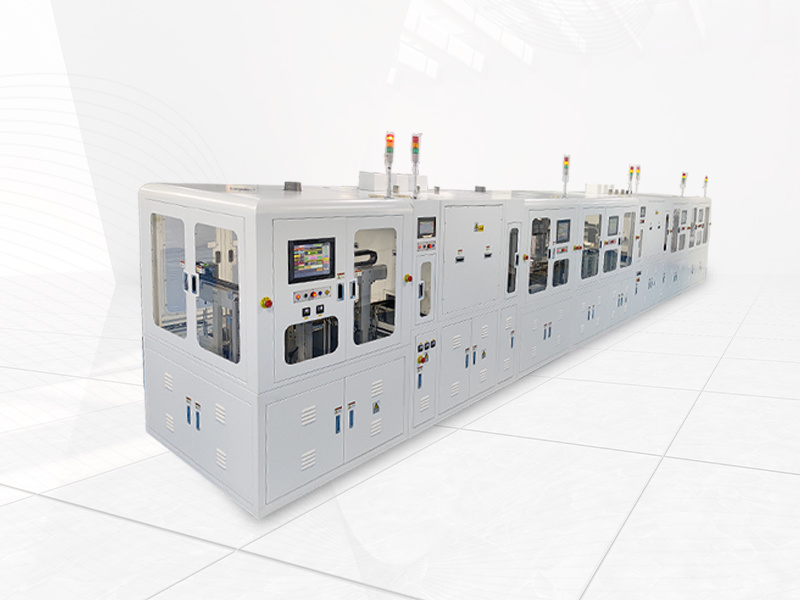Understanding Automatic Dipping Machines: A Key Component in Manufacturing
Release time:
Mar 23,2025
Automatic dipping machines are specialized equipment designed to facilitate the dipping process in various manufacturing applications. These machines are widely used across industries where products require a consistent and uniform coating of materials, such as paints, varnishes, or other liquid substances. By automating the dipping process, manufacturers can achieve higher efficiency, reduced labor costs, and improved product quality.
One of the primary functions of an automatic dipping machine is to ensure that the products are immersed in a liquid coating at a controlled speed and duration. This precision helps in minimizing waste and achieving uniform coverage, which is crucial for products that require a specific finish or protective layer. The machines often come equipped with adjustable settings, allowing operators to customize the dipping parameters according to the requirements of different materials and products.
In addition to enhancing efficiency, automatic dipping machines contribute significantly to consistency and quality control. Manual dipping processes can lead to variations in coating thickness and quality, which can adversely affect the final product. By employing an automatic dipping machine, manufacturers can ensure that each piece receives the same treatment, reducing the likelihood of defects and improving overall quality.
Moreover, these machines are designed with safety and ease of operation in mind. Many models feature advanced control systems that allow operators to monitor the dipping process in real-time, offering insights into production metrics and enabling immediate adjustments if necessary. This level of automation not only enhances productivity but also minimizes the risk of accidents associated with manual handling of hazardous materials.
Automatic dipping machines also find applications in various industries beyond traditional manufacturing. For example, they are commonly used in the automotive industry for coating components, in the electronics sector for protecting circuit boards, and even in the food industry for coating items before packaging. Their versatility makes them an invaluable asset in modern manufacturing processes.
Furthermore, the integration of technology into these machines has led to innovations such as IoT connectivity, enabling manufacturers to collect data and optimize processes further. By leveraging data analytics, companies can identify trends, predict maintenance needs, and streamline their production workflows.
In conclusion, automatic dipping machines play a crucial role in enhancing efficiency, quality, and safety in manufacturing processes. Understanding their functionality and benefits can help professionals in the manufacturing sector make informed decisions about integrating such machinery into their operations. As industries continue to evolve, the importance of these machines will likely grow, making them an essential component of modern manufacturing strategies.
One of the primary functions of an automatic dipping machine is to ensure that the products are immersed in a liquid coating at a controlled speed and duration. This precision helps in minimizing waste and achieving uniform coverage, which is crucial for products that require a specific finish or protective layer. The machines often come equipped with adjustable settings, allowing operators to customize the dipping parameters according to the requirements of different materials and products.
In addition to enhancing efficiency, automatic dipping machines contribute significantly to consistency and quality control. Manual dipping processes can lead to variations in coating thickness and quality, which can adversely affect the final product. By employing an automatic dipping machine, manufacturers can ensure that each piece receives the same treatment, reducing the likelihood of defects and improving overall quality.
Moreover, these machines are designed with safety and ease of operation in mind. Many models feature advanced control systems that allow operators to monitor the dipping process in real-time, offering insights into production metrics and enabling immediate adjustments if necessary. This level of automation not only enhances productivity but also minimizes the risk of accidents associated with manual handling of hazardous materials.
Automatic dipping machines also find applications in various industries beyond traditional manufacturing. For example, they are commonly used in the automotive industry for coating components, in the electronics sector for protecting circuit boards, and even in the food industry for coating items before packaging. Their versatility makes them an invaluable asset in modern manufacturing processes.
Furthermore, the integration of technology into these machines has led to innovations such as IoT connectivity, enabling manufacturers to collect data and optimize processes further. By leveraging data analytics, companies can identify trends, predict maintenance needs, and streamline their production workflows.
In conclusion, automatic dipping machines play a crucial role in enhancing efficiency, quality, and safety in manufacturing processes. Understanding their functionality and benefits can help professionals in the manufacturing sector make informed decisions about integrating such machinery into their operations. As industries continue to evolve, the importance of these machines will likely grow, making them an essential component of modern manufacturing strategies.








